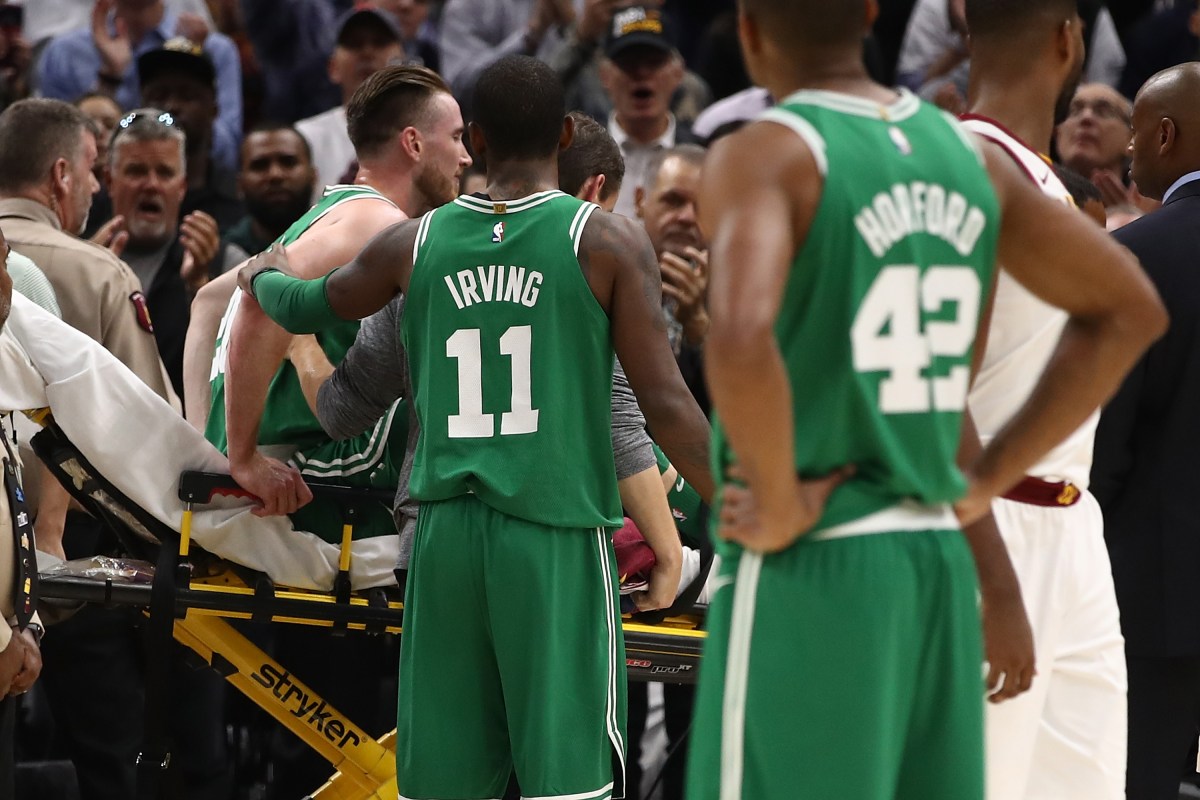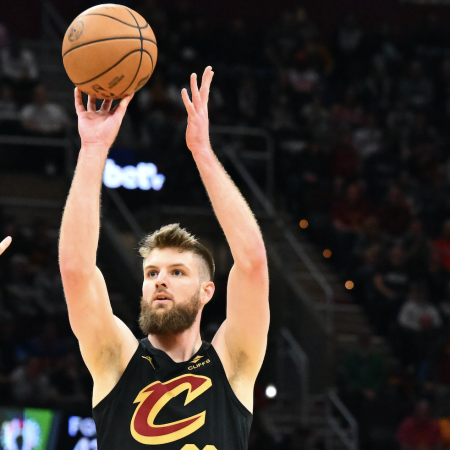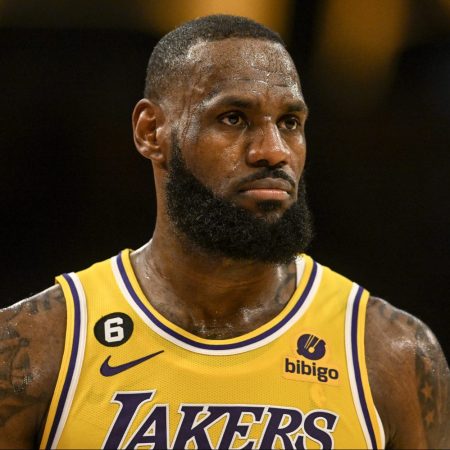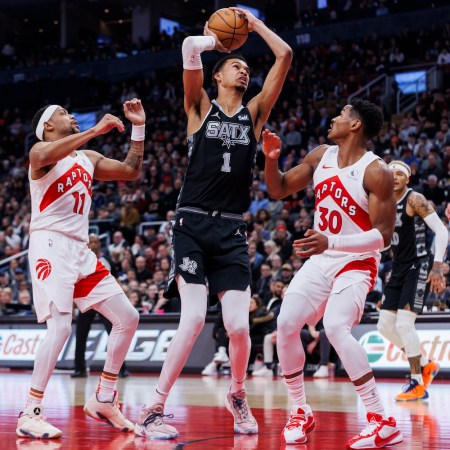Non-NBA sports are filled with cases of a star falling and their team still coming out on top:
-While Pele technically won three World Cups, for one of them he was in the stands. (Knocked out of the lineup in 1962, teammates Garrincha and Vava tied for the Cup lead in goals scored as Brazil defended their 1958 title.)
-In Game 2 of the 1951 World Series, Yankee Mickey Mantle destroyed his knee when he rushed to catch a fly ball only to stop suddenly because he realized Joe DiMaggio had it. New York won the World Series anyway. (They did it the next two seasons as well, even as DiMaggio retired.)
-When Rob Gronkowski missed the entire 2016 postseason, New England and Tom Brady still took the Super Bowl. (Of course, sixth-round draft pick Tom Terrific won his first while replacing former #1 overall selection/Pro Bowler Drew Bledsoe.)
And just this season…
-The Philadelphia Eagles lost their MVP candidate quarterback Carson Wentz and rolled to a Super Bowl title behind Nick Foles.
In the NBA, however, if you don’t have healthy stars, don’t worry about that parade permit.
When the Celtics won eight straight titles in the ’60s, Bill Russell averaged at least 44 minutes per game every playoff run. Just as in the late ’40s and early ’50s George Mikan’s Minneapolis Lakers reeled off five titles in six years, falling short only when Mr. Basketball played with a fractured leg. And as the Chicago Bulls won titles in each of Michael Jordan’s last six full seasons with the team, His Airness made at least 17 starts and averaged over 40 minutes each playoff run.
Why are elite NBA players so irreplaceable? To put it simply, rosters are short and the postseason is long. The NBA allows only 13 active players—the NHL permits 23, the MLB’s active roster is 25 and the NFL lets up to 46 play—and barring a blowout, fewer than that see action. The playoffs feature four rounds of best-of-seven, meaning a team needs to play at least 16 games to win a title and possibly as many as 28. (The Eagles only had to win three, including the Super Bowl.) Throw in the need to get back on defense and gimpy basketball players just don’t get too many opportunities to pull a Kirk Gibson.
NBA teams can take a round or two on the strength of the supporting cast—particularly if they run into another team who’s hurting—but come the Finals, you better have your Jordan ready. (And your Pippen too—Scottie averaged at least 39.6 minutes in each Chicago title run.)
We’ll look at the only two exceptions to the rule and then examine this year’s playoff teams with the greatest need for quality medical care.
1971-72 Los Angeles Lakers
The Loss: Elgin Baylor
The Situation: The Lakers had reached the Finals in 1959, 1962, 1963, 1965, 1966, 1968, 1969 and 1970. Unfortunately, they lost all of them, even as they assembled a team that included Baylor (who arrived in 1958), Jerry West (1960) and Wilt Chamberlain (1968). So when Baylor retired during the regular season, the odds of them at last reaching the mountaintop seemed slim.
What They Were Losing: Baylor once posted three straight seasons of at least 34 points per game. (Kobe Bryant only scored as many as 34 per game once in his career—Kevin Durant and LeBron James have never reached this level.) Quite simply, Mr. Inside was one of the most explosive scorers in NBA history with his 27.4 points per game average (third all-time) and a great rebounder as well, averaging 13.5 a game for his career (10th).
Why They Still Won: A Celtic fan would say it’s because they didn’t have to face Boston. (They lost to them in all of those Finals except for 1970—more on that particular loss momentarily.) Laker fans would say it’s because you can handle losing the third highest career scoring average when you still have the second (Chamberlain’s 30.1) and the sixth (West’s 27, often accumulated in the most dramatic manner possible—see below).
Throw in Hall of Famer Gail Goodrich (25.9 points for the season), Jim “Butterball” McMillian (18.8 points), Happy Hairston (13.1 points and a matching 13.1 rebounds) and, even without Baylor, it’s like a video game after entering a cheat code. No wonder they won 33 in a row.
1979-80 Los Angeles Lakers
The Loss: Kareem Abdul-Jabbar
The Situation: This team had yet to acquire many of the faces associated with the Showtime Lakers, notably James Worthy, Byron Scott, A.C. Green, Kurt Rambis and Coach Pat Riley. They did possess one of the most interesting rosters in NBA history, including future Hall of Famer Jamaal Wilkes, another future Hall of Famer in Spencer Haywood (who was the first husband of David Bowie’s wife Iman), All-Star “Stormin’ Norman” Nixon (the husband of actress/dancer Debbie Allen—this was a team that married well) and Butch Lee (who led Marquette to the NCAA championship and was the first Puerto Rican in the NBA). Even so, when Kareem went down with the Lakers leading the Finals three games to two, it seemed unlikely they’d be able to hold off Dr. J’s 76ers.
What They Were Losing: Kareem has scored more points and won more MVPs than anyone else in NBA history. His skyhook remains the most unstoppable weapon in basketball. Throw in his utter dominance at UCLA and it’s insulting he isn’t at least mentioned in the conversation with Jordan as the greatest player ever.
Why They Still Won: 1. They only had to win one more game. 2. They had this rookie named Magic. (Playing center instead of point guard, Johnson racked up 42 points and 15 rebounds.)
That’s pretty much it. Willis Reed was famously injured in the 1970 NBA Finals against the Lakers, but he still played six of the seven games and averaged 37.7 minutes and 23 points. Plus he didn’t stay gone for long, making a legendary return for the Knicks in Game 7. (It should be noted Reed was ably assisted by three fellow Hall of Famers in Dave DeBusschere, Walt Frazier and Bill Bradley.)
There are cases of teams making the Finals despite injuries to key players. Take the Cleveland Cavaliers in 2015. With Kevin Love already lost early in the playoffs, Kyrie Irving was only able to play one game in the Finals before he went out too. What followed was a remarkable stretch even by the regal standards of King James. LeBron led both teams in minutes played (45.7), points (35.8), rebounds (13.3) and assists (8.8). (The exhaustion was only evident in his shooting: .398 from the field and .687 from the line.)
It wasn’t enough: The Warriors won in six.
The next season Love and Irving stayed in the lineup and gave LeBron just enough firepower for the Cleveland to beat Golden State in seven, bringing the Cavaliers their first title.
Similarly, 1988 saw Detroit’s Isiah Thomas pump in 43 points (including 25 in the third quarter alone) on a rolled ankle against the Lakers in Game 6, desperately trying to close out the Finals. But the Pistons came up short (losing by one) and then lost by three in Game 7 as Thomas played only 25 minutes and scored just 10 points on 4 of 12 shooting. The Pistons finally won a title in 1989, when their sweep of Los Angeles was sealed when Magic Johnson went down with a hamstring injury in Game 2 and managed only a brief return in Game 3.
NBA history is filled with cases where an injury or two leaves a team wondering what might have been. But what can be even worse is when a player chooses to ignore his body and play on regardless, as happened to one of the great Bolton Celtic teams.
1986-87 Boston Celtics
The Player Who Should Have Been Lost: Kevin McHale
The Situation: Entering the season, the Celtics were the defending NBA champs and, through some classic Red Auerbach wizardry, managed to acquire the #2 draft pick. They used it on Maryland’s 6’9” All-American Len Bias. In 2016, Duke’s Coach K. described Bias as one of the two greatest players who’d played against Duke in all his decades there. (The other: Some guy named Jordan.) Bias died of a cocaine overdose just two days after his selection. Beyond this, Hall of Fame center Bill Walton’s body had finally completed its total breakdown, radically slashing his minutes on the occasions he even could play. In short: Boston suddenly found themselves very dependent on their All-NBA power forward. And he had a fractured foot.
Why He Shouldn’t Have Been Playing: Once more: He had a fractured foot. The Celtic team physician openly discussed knowing just how injured McHale’s foot was on April 28, yet he continued playing on it for over a month. The Celtics experienced the worst of all worlds in the playoffs: They didn’t actually repeat, but by reaching the Finals and stretching the Lakers to six games, McHale racked up an unnerving amount of mileage.
Why This Mattered: McHale never quite recovered—this season saw his career high in points (26.1) and rebounds (9.9) and he never again came all that close to either figure. He retired at 35, surprisingly young for a 6’10” player who always relied on technique over athleticism. (By comparison, his longtime frontcourt mate Robert “The Chief” Parish played until he was 43.) The Celtics didn’t reach another Finals until 2008.
McHale playing on a fractured foot was a remarkable display of toughness. With the benefit of hindsight, it was also—what’s that word?—dumb.
“There’s this perception that doctors and teams are pushing guys before they’re ready,” says Dr. David Geier, an orthopedic surgeon and the author of That’s Gotta Hurt: The Injuries That Changed Sports Forever. (He also knows something about how pro franchises operate from his time working with the medical teams for the St. Louis Cardinals and St. Louis Rams.) While acknowledging there “probably are instances” where this is true, he says in general today it’s far more likely a team would go to the “opposite extreme,” particularly in the NBA. (After all, when contracts are almost always guaranteed money and LeBron is still going strong after 15 seasons, why take the risk?)
With that in mind, here’s how health stands to shape the NBA playoffs:
Steph Curry, Golden State Warriors
The two-time MVP hasn’t played since suffering an MCL sprain of his left knee on March 23. Golden State intends to keep him out until at least the next round. Geier believes the Warriors will be “extra cautious” because if a player comes back too early “you reinjure it and you have to start back at zero.”
How will this impact Curry? “Generally, until it’s completely healed, it’s tough to move side to side,” says Geier. From a practical standpoint, this should mean Curry “getting the pass, spot up and shooting: no problems.” Creating his own shot could be an issue though: “Dribbling around three guys, changing direction and then stopping and shooting, that’s potentially a little more challenging.” The Warriors want Curry to be as close to Top Chef form as possible: Curry’s rough 2016 Finals (shooting only .403 from the floor with more turnovers than assists) helped make Cleveland’s comeback possible. Some still blame his subpar play on a knee injury.
Kawhi Leonard, San Antonio Spurs
Golden State can hold back Steph with confidence because they’re playing a team minus its own superstar. When Leonard was knocked out of Game 1 of the Western Conference Finals in 2017 on a questionable foul by Zaza Pachulia, the Spurs were up 23 points. They promptly lost that game and the rest of the series.
Since then, Leonard has played in only nine regular season games and no one has any idea when he’ll return. Leaving aside gossip about whether his relationship with the team has completely broken down, Geier says Leonard faces a uniquely trying recovery from a quad injury. Quite simply, there’s a “small area of degeneration within the tendon.”
“It’s really a tricky thing,” Geier says. “You try rest and physical therapy and stuff like that. It’s hard to get that tendon to grow in normally again, especially with that kind of physical demand.” (He says the tennis legend Rafael Nadal has been plagued with a similar condition.)
This is a situation that must be deeply frustrating to both player and team: “My guess what is going on is that not only the Spurs doctors and therapists but all the second-opinion doctors can’t seem to get rid of it.” (It is also frustrating for Geier since he’s a Spurs fan.)
Surgery is theoretically an option: “I’ve only had to operate on one patient with that.” It was a member of the military who’d been struggling for years: “By the time they came to me, they were, ‘Just do whatever you need to do surgically.’” Geier notes he “opened it up and took out this little area,” at which point “it did great” with a recovery that “took like eight weeks.” (Geier suspects Leonard isn’t getting surgery: “I’m sure it’s been discussed, but if he was headed to that, my guess is they would have already done it.”)
The result is that, while Curry’s return is a matter of time, Leonard’s has officially become scary.
The Boston Celtics in General
The Celtics won 53 games last season as they put up the best record in the East and reached the conference finals. They then dumped all but four members of that roster to bring in All-Stars Gordon Hayward and Kyrie Irving. Hayward was lost at the very beginning of the regular season; Irving was lost towards the end of it.
Yet they still somehow took the first two games in their series against the Milwaukee Bucks, with Terry Rozier (7.2 points per game for his career) pumping in 23 in each of them.
And maybe the NBA will get a Nick Foles, after all.
Whether you’re looking to get into shape, or just get out of a funk, The Charge has got you covered. Sign up for our new wellness newsletter today.
























